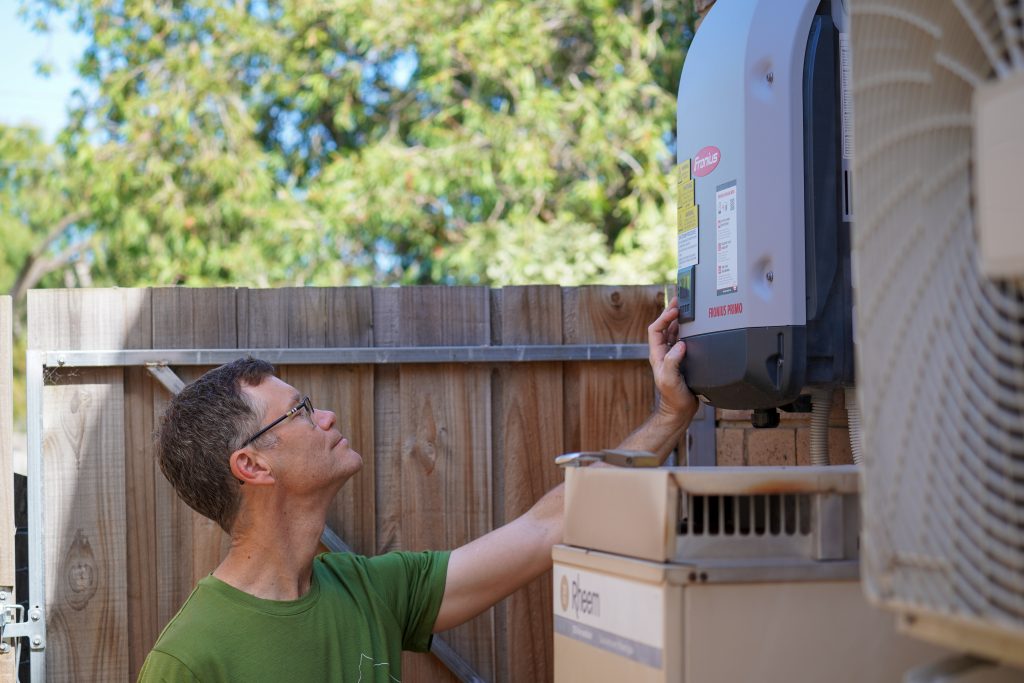It’s a piece of advice that consumer advocates apply to everything, from health insurance to washing machines, but one we feel more equivocal about when it comes to the energy market.
Shop around.
We don’t like these words because they place the onus on consumers. They suggest it is your responsibility to do the legwork and make sure you aren’t being charged more for electricity than you should be.
And that’s not fair (it’s also not entirely true).

Shopping around requires transparency
Picture a trip to your local car dealership, looking for an affordable car. You can see the price of various models, check out features and even take them for a drive. You can move to the dealership next door and make further comparisons.
You’re comparing apples with apples (and hoping not to buy a lemon).
Can we really say this is what it’s like being an energy consumer? If you’ve ever tried to “shop around” how easy did you find it to compare different plans? Do you even know whether you’re signed up to the cheapest offer you are eligible for with your existing retailer?
What if that car yard contained some vehicles that were for sale and others for lease? Some that cost more to drive at night and others that you paid for by the kilometre travelled? What if you didn’t discover the real price of each car until a couple of months after you’d bought it and been driving it around?
As consumers we wouldn’t stand for that. And when it comes to electricity we shouldn’t either.
All of our research with consumers says they want their energy to be plentiful, to be affordable and to be clean. They also, quite desperately, want it to be easy. For that to happen, information about pricing and energy use needs to be far more transparent than it is today.
Some help is coming
The Australian Energy Market Commission issued a rule determination in March that will direct the Australian Energy Regulator to make binding guidelines that force retailers to simplify billing for consumers. It should soon get much easier to consult your bill and understand your energy usage (or generation) and to be able to compare your energy offer with others.
But bills are a blunt instrument
It’s a start but it’s not enough. Most humans don’t like getting bills. Behaviourally, we are conditioned to either ignore them until later or pay them quickly and move on. We aren’t so accustomed to viewing our bill as a valuable education or information tool.
With paperless accounts and direct debiting now commonplace, many Australians barely even look at their bill. Despite this, for most consumers the quarterly bill is the still the chief source of information about energy usage.
There are better ways. The rise of smart metering offers the ability for both consumers and their retailers to dynamically track energy use. Retailers can offer apps and platforms that display energy use in real time and break it down across times of day, enabling consumers to make decisions around adjusting their energy use with open eyes and clear guidance.
But outside of Victoria, fewer than 20 per cent of homes across the eastern and southern states have access to smart meters. We need to speed up the rollout of this helpful technology. (Read our bECAuse blog on this topic.)

Prices are dropping
Electricity prices have been in the news recently after the Australian Competition and Consumer Commission (ACCC) announced prices had dropped 9 per cent across the NEM since mid 2020 after a suite of measures were brought in aimed at making energy more affordable.
Among the changes is the requirement for retailers to provide a Default Market Offer (DMO) to any consumer if the customer chooses it. The Default Market Offer price is capped by the Australian Energy Regulator (AER) each year and its terms and conditions are set. The latest determination, due to take effect from 1 July 2021, will pass $65 million of savings to the 727,000 households and small businesses currently on the DMO. However, while this is welcome news, and the DMO does protect consumers from paying excessive prices, it is not usually the best available offer. Retailers are free to offer deals and plans that improve upon it.
If energy prices are down, why is my bill so high?
The price of default offers is dropping because of increased competition but perhaps more importantly because the wholesale cost of electricity has fallen, thanks to the large quantities of renewable energy that are flooding into the market.
Under laws introduced in 2019, energy retailers must pass cost savings on to customers where they are sustained and substantial. That includes where the costs of generation or the costs of the poles and wires go down. The ACCC monitors the market to ensure retailers comply.
But your energy bill also depends on how much energy you use. The Covid-19 pandemic means more of us are working from home and going out less for entertainment and leisure. That all adds up to using more energy and higher bills.

Shopping around requires trust
Theoretically, more competition enables consumers to choose a plan that is better (usually cheaper) for them.
But think back to that car yard. What if the dealer suddenly called you out of the blue and offered a deal on a new car they claimed would be cheaper to own and run? Would you accept their word for it, trusting them to be a reliable source of information? Or would you be inclined to think of the call as just another sales tactic?
The way we think of car salesmen and women influences this. Just as clearly, so does the way we think about energy retailers. This is why at Energy Consumers Australia we talk about trust and transparency as being key components of the energy system we work towards for consumers.
Another measure recommended by the ACCC and not yet implemented is the creation of a public awareness and information campaign around energy literacy. Understanding how the system works and what entitlements consumers have under it would allow many more people to benefit from the savings dangled by default offers or new retail models.
It still won’t be for everybody. Some consumers may enjoy the process of going from retailer to retailer, finding and comparing different deals and analysing their usage patterns. Many more may lack the time or inclination to do this work. They shouldn’t be subjected to higher than necessary bills as a result.
What can you do
We've put together a range of resources to assist households and small businesses to get a better deal on their energy bill and to help them better navigate the energy system.

